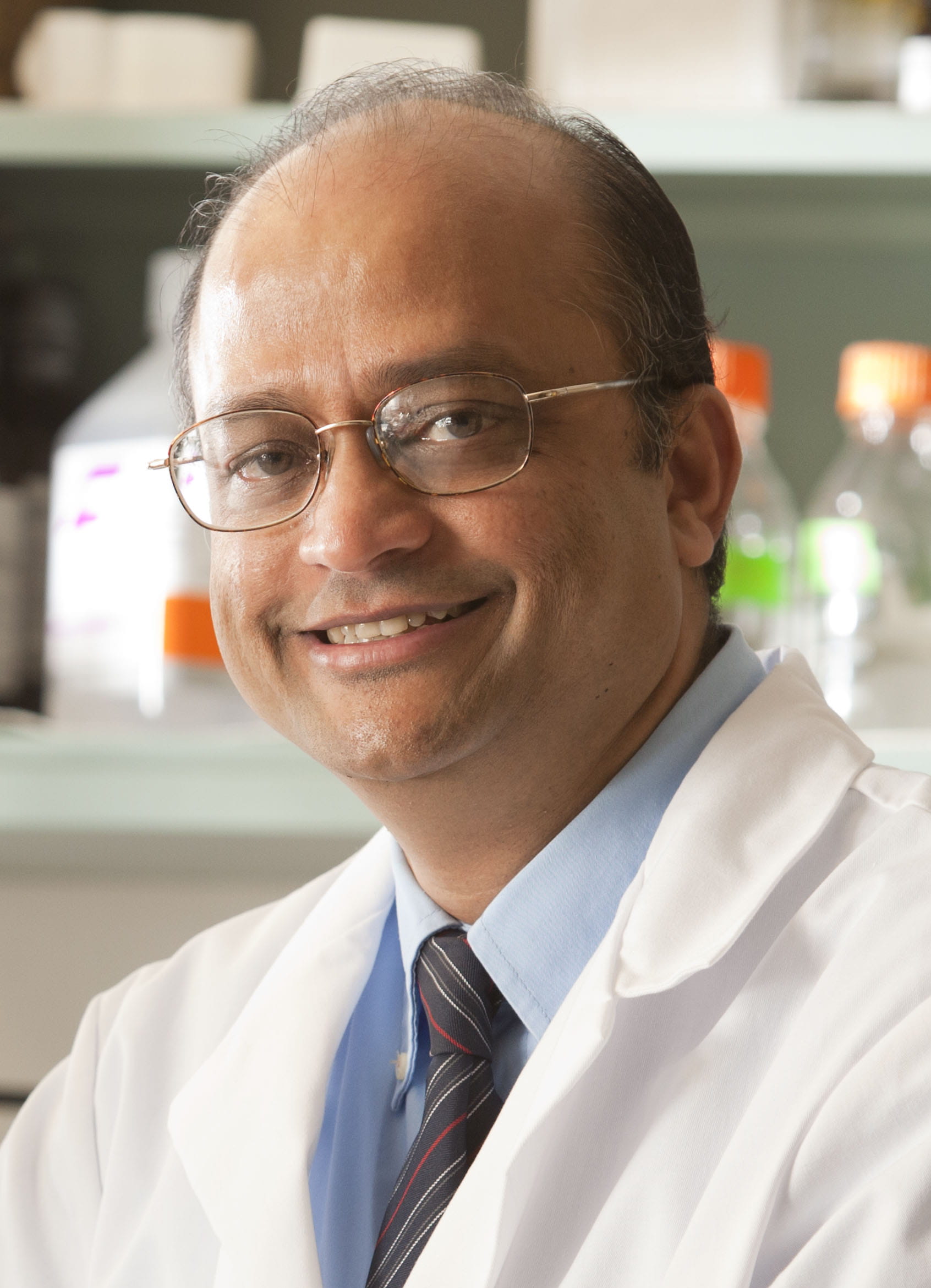Treating Usher Syndrome Hearing Loss
November 13, 2019
Researchers develop pioneering gene therapy technology
Innovations in Ear, Nose & Throat | Fall 2019
 Kumar Alagramam, PhD
Kumar Alagramam, PhDBoston-based Akouos has entered into an exclusive license to develop a gene therapy jointly owned by University Hospitals Cleveland Medical Center and Case Western Reserve University The pioneering technology has the potential to treat hearing loss associated with Usher syndrome type 3A (USH3A), a rare, progressive genetic disorder characterized by sensorineural hearing loss and retinitis pigmentosa that advances to complete vision loss.
The partnership is based on research developed in the lab of Kumar Alagramam, PhD, Director of Research for University Hospitals Ear, Nose & Throat Institute, and Anthony J. Maniglia Chair for Research and Education and Professor at Case Western Reserve University School of Medicine. USH3A is caused by mutations in the clarin-1 gene; Y176X and N48K are the most common mutations in this gene among USH3A patients. Alagramam and his team generated the first mouse models for progressive hearing loss associated with Y176X and N48K mutation.
Founded in 2016, Akouos is developing precision gene therapies that have the potential to restore and preserve hearing. The company has licensed the rights to develop and commercialize the technology developed in Alagramam’s lab, pending demonstration of safety and efficacy in future clinical trials. “The team at Akouos was interested in the potential of genetic therapy to treat a variety of hearing disorders,” says Alagramam. “They noticed a publication of our work in 2017 and were interested in our discovery.”
USHER SYNDROME
According to the National Institutes of Health (NIH), Usher syndrome affects four to 17 people per 100,000 in the United States, accounting for approximately half of all hereditary deaf-blind disorders. In USH3A, hearing loss is characterized as rapidly progressive, manifesting postlingually in the first decade of life. Gradual vision loss follows, advancing to total blindness over time.
Currently, there is no cure or drug to halt or reverse the progression of Usher syndrome. An autosomal recessive genetic trait, the resulting hearing loss is characterized by impaired ability of the inner ear and auditory nerves to transmit sound input to the brain. Because the soft tissue of the inner ear is delicate and difficult to evaluate clinically, the genetically engineered mouse model allows researchers to study this unique pathophysiology.
GENETICS AND THE SEARCH FOR A DURABLE RESCU
Mutations in the mouse clarin-1 gene resulted in animals that displayed early profound hearing loss, supporting the association between the human clarin-1 gene and hearing loss in the USH3A patients. “Though invaluable in terms of ‘firming up’ this connection and shedding light on why hearing loss happens with clarin-1 mutation, the early mouse ‘models’ for USH3A did not mirror the progressive hearing loss pattern observed in USH3A patients,” says Alagramam. “We were able to engineer a mouse model to more adequately mimic the progressive hearing loss observed in patients with USH3A, a crucial advance that enabled us to investigate therapeutic approaches.”
The next step was to test potential genetic mitigations. Genes have a coding sequence that enables cells to synthesize necessary proteins. In simple terms, lost function linked to a defective segment of genetic code could be overcome by introducing a “good” copy of that segment onto the mutant background.
“In some gene therapy approaches, we use viral vectors as carriers of the ‘good’ copy of the genetic code,” says Alagramam. “Think of fixing a flawed sentence by placing a sticker with the corrected information somewhere on a book’s page, rather than in its exact original location.” In theory and experimental practice, reinserting the core coding sequence onto the right “page” is often sufficient to regenerate the protein and replenish the lost function — in this case, hearing.
But this time, there wasn’t a simple fix. “For this particular gene, replacing just the core coding sequence failed to produce a durable rescue,” says Alagramam. “We started to consider the areas immediately attached to the core, called the untranslated regions or UTRs. When we introduced the genetic core along with these flanking UTRs, we were able to rescue the hearing loss in our mouse model.” The team determined that those flanking sequences play a significant role in producing a stable translation, and their work continued.
MOVING FORWARD
“We are hopeful about the potential of this genetic therapy to preserve hearing and improve quality of life for children and adults living with Usher syndrome,” says Alagramam. “Perhaps the significance of looking beyond the core sequence may have translational application for other types of genetic disease as well.” Additionally, because hearing loss and vision loss are linked to the same mutations in USH3A, the vector may show promise in mitigating vision problems in the future.
“We appreciate the opportunity to partner with CWRU and Akouos to commercialize this technology that will bring hope to patients impacted by hearing loss due to USH3A,” said Neil Wyant, managing director of UH Ventures, the innovation and commercialization arm of UH.
For more information, contact Alagramam at Kumar.Alagramam@UHhospitals.org or call 216-868-8943.


